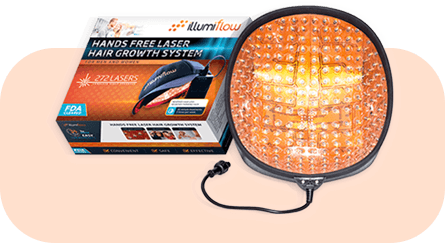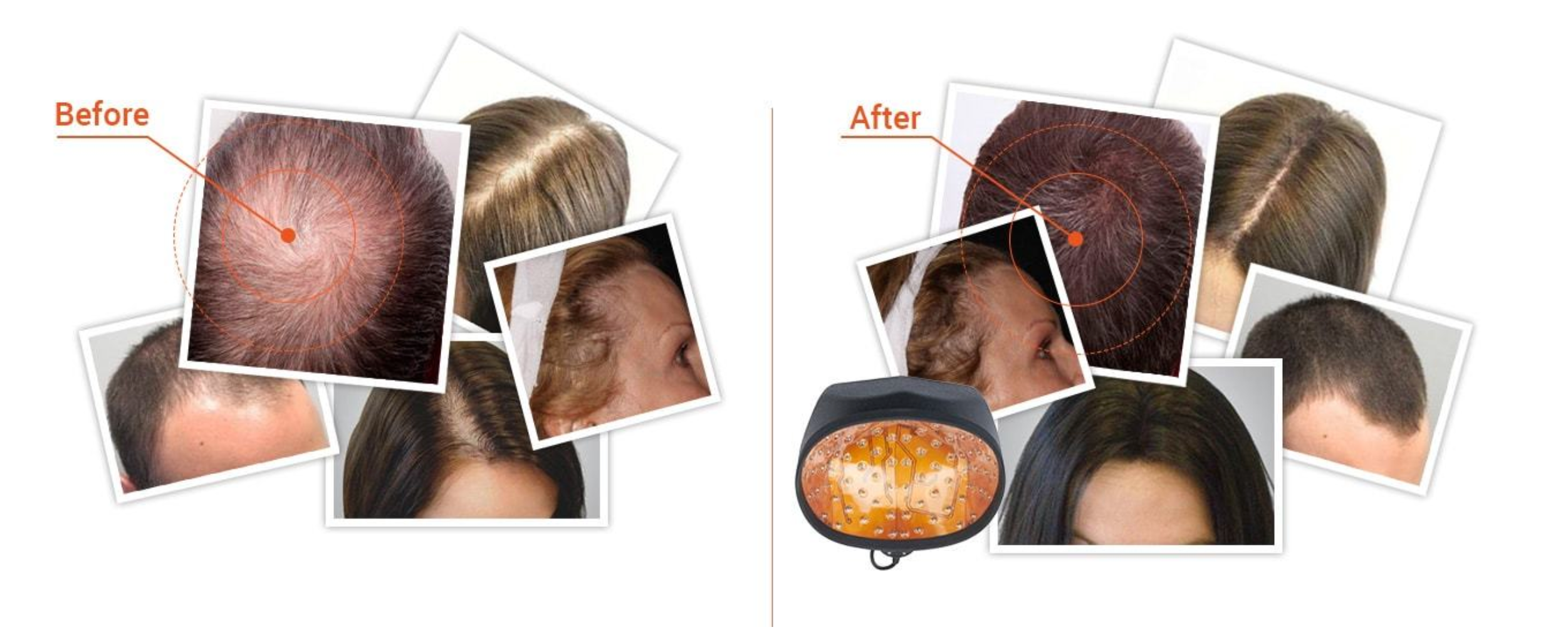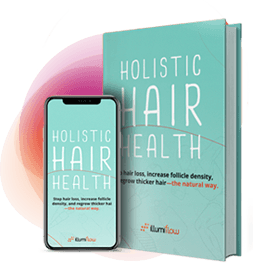Laser Cap Therapy or Finasteride: Which Is More Effective?

I think we can all agree that trying to find a reliable method to reverse hair loss is difficult. There are so many options to choose from that it is almost impossible to figure out which one is right for you and if it will work.
You may have asked yourself many questions in your search for how to regrow hair: What are my options? Does Rogaine work? Is there anything more natural out there?
But maybe the choice does not have to be a difficult one.
There are pros and cons to each choice, but once everything is laid out on the table for you, the answer will become obvious.
In this article we will compare the effects of laser cap therapy and finasteride, both of which are FDA approved or FDA Cleared. No need to do hours of research to figure out how to restore hair, as we will detail the pros and cons of both treatments, hopefully taking away the difficulty in making your decision.
Shall we begin?
The Benefits of Laser Cap Therapy vs. Finasteride
Let’s go through what each of these two different treatments can do for you.
Benefits of Laser Cap Therapy
Laser cap therapy allows you to regrow your hair naturally and painlessly in the comfort and privacy of your own home. Just put it on for thirty minutes, three separate times per week and that’s all that it takes. Most users will see results in four to six months. Your hair growth will progress in relatively predictable phases.
Laser cap treatment promotes new hair growth by simply supporting and amplifying what your body already does on its own: healing and regenerating itself every moment and shedding old cells to make room for healthier new ones.
Unlike many other solutions to hair loss, laser cap therapy promotes natural, sustainable change over time. It takes longer than traditional surgery, but your new hair will be permanent rather than temporary.
Laser caps are safe to use in conjunction with most other hair growth treatments. Laser cap therapy has almost no contraindications, which means that it should not interfere in any way with any medicated shampoos or conditioners.
Benefits of Finasteride
Finasteride (also known as Proscar or Propecia) is only used to treat male pattern baldness (androgenetic alopecia), a condition that develops in up to 80 percent of Caucasian men. In the United States, finasteride and minoxidil (Rogaine) are the only two FDA approved drugs for the treatment of male pattern hair loss as of 2017.
Treatment with finasteride slows further hair loss and provides about 30 percent improvement in hair loss after six months of treatment.
It may take at least three months before you see any improvement because hair loss and growth happen slowly over time. However, you should expect to see improvement during the first twelve months of your treatment. If you have taken finasteride for twelve months and have not noticed any improvement, further treatment probably will not help.
However, the effectiveness of the drug only persists as long as the drug is taken. Finasteride will only slow hair loss while you are taking the medication. You have to continue to take finasteride even if you have already noticed an improvement and you should not stop taking it without talking to your doctor. You will probably lose any hair that grew back while you were taking finasteride during the first 12 months after you stop taking the medication.
Finasteride has not been shown to treat thinning hair at the temples and it should not be used to treat hair loss in women. Finasteride has also been tested for pattern hair loss in women; however, the results were no better than placebo.
Let’s now take a look at the side effects for both.
Side Effects Compared for LLLT and Finasteride
Laser Cap Therapy Side Effects
The bottom line is this: There are no known or potential side effects to using laser cap therapy. Unlike many alternative hair loss treatments and prescription medications, laser cap therapy is completely safe, with zero side effects.
Finasteride Side Effects
Side effects of finasteride tend to be related to sexual function. Decreased sexual ability/desire may occur. In some men, this medication can decrease the amount of semen released during intercourse. This is harmless, but has continued in some men even after stopping treatment. There are also reports of persistent diminished libido or erectile dysfunction after stopping the drug.
Some men develop gynecomastia (breast development or enlargement) following finasteride usage
Other side effects of finasteride include:
- Inability to have or maintain an erection
- Pain in the testicles
- Depression and suicidal thoughts
Sounds scary, right? But I’m jumping ahead. Let’s dig a little deeper.
The Science Behind LLLT and Finasteride
LLLT Explained
Want to know how it works? The pain-free technology behind laser cap therapy is known as LLLT, or Low Level Laser Therapy. A low level laser is basically a high quality laser that meets very specific standards in terms of light output.
There are unique and specific wavelengths used in low level laser therapy, all on the red end of the spectrum of light. Because the main tissues of the skin (hemoglobin and melanin) have high absorption capacity at shorter wavelengths, the use of LLLT in humans has been almost exclusively red in color and near infrared in frequency.
Finasteride Explained
Finasteride treats hair loss in men by blocking DHT (dihydrotestosterone). DHT is a hormone derived from testosterone thought to be the reason why many men experience hair loss.
DHT is very important early on in life, and leads to development of male sex characteristics. It also plays a huge role in puberty. However, too much DHT later in life is what leads to things like hair loss and prostate cancer.
By lowering scalp levels of DHT, finasteride can maintain or increase the amount of terminal hairs in the anagen phase by inhibiting and sometimes reversing miniaturization of the hair follicle. Finasteride is most effective on the vertex (or back) portion of the scalp.
Can you now see the difference?
Should You Go With Laser Cap Therapy or Finasteride?
So what’s it all mean?
Now that you have all the facts, which hair loss solution should you go with?
It all depends on your point of view.
If you feel like you want the zero hassle of just taking a pill once a day, and don’t mind dealing with the many side effects or the fact that the hair loss will return once you stop taking the pill, then you might want to go with Finasteride.
However, if you want zero side effects and permanent natural hair growth then laser cap therapy seems like the better alternative.
Conclusion:
To sum up, you have a lot of choices when it comes to finding a solution for your hair loss.
However, not all choices are equal.
And unfortunately there is no miracle cure for loss of hair.
Some purported hair loss solutions are not nearly as effective as others.
Some come with a lot of side effects and simply aren’t worth the risks while others only treat thinning hair.
When comparing laser cap therapy to finasteride, you now have all the info you need to make an educated and informed decision.






